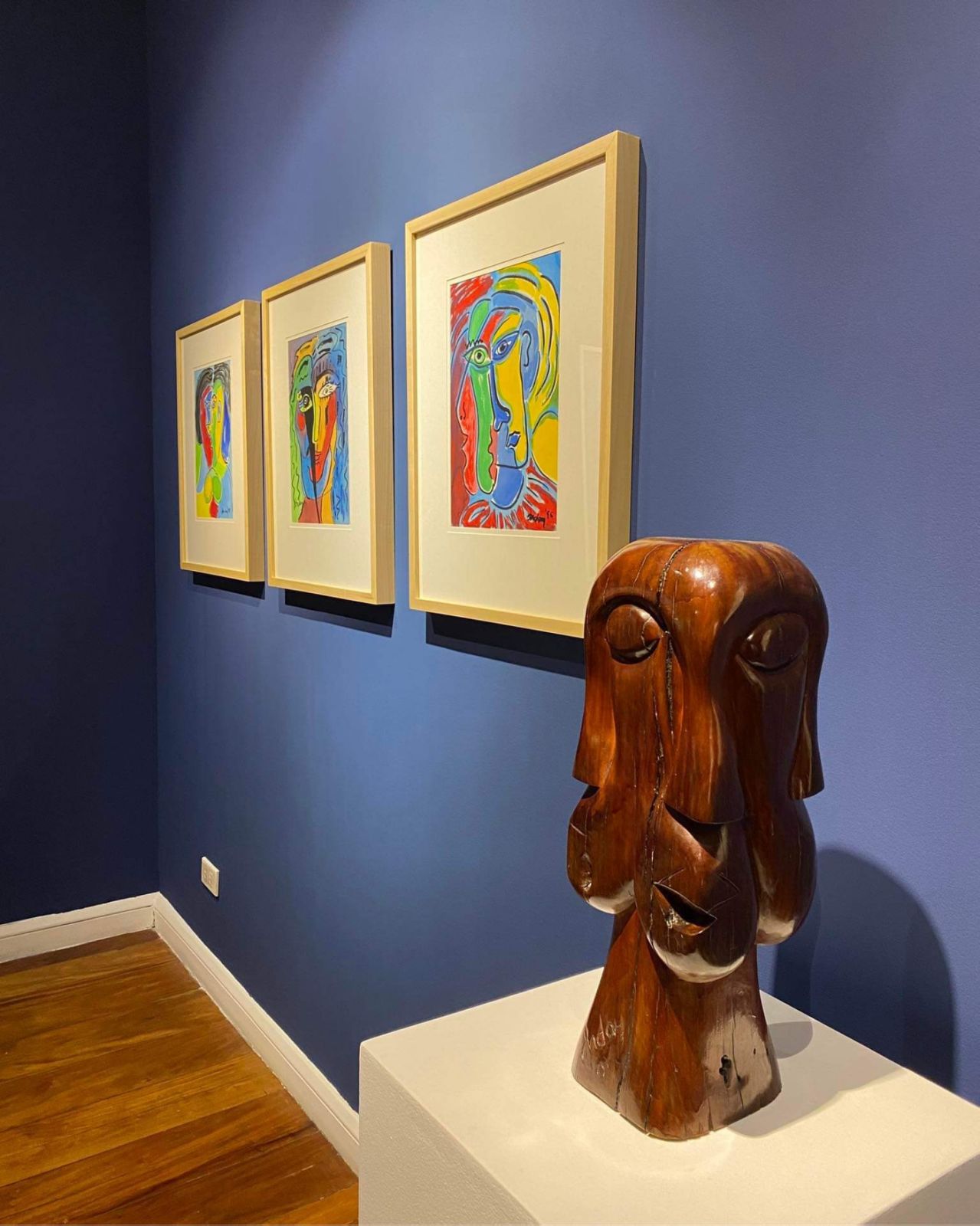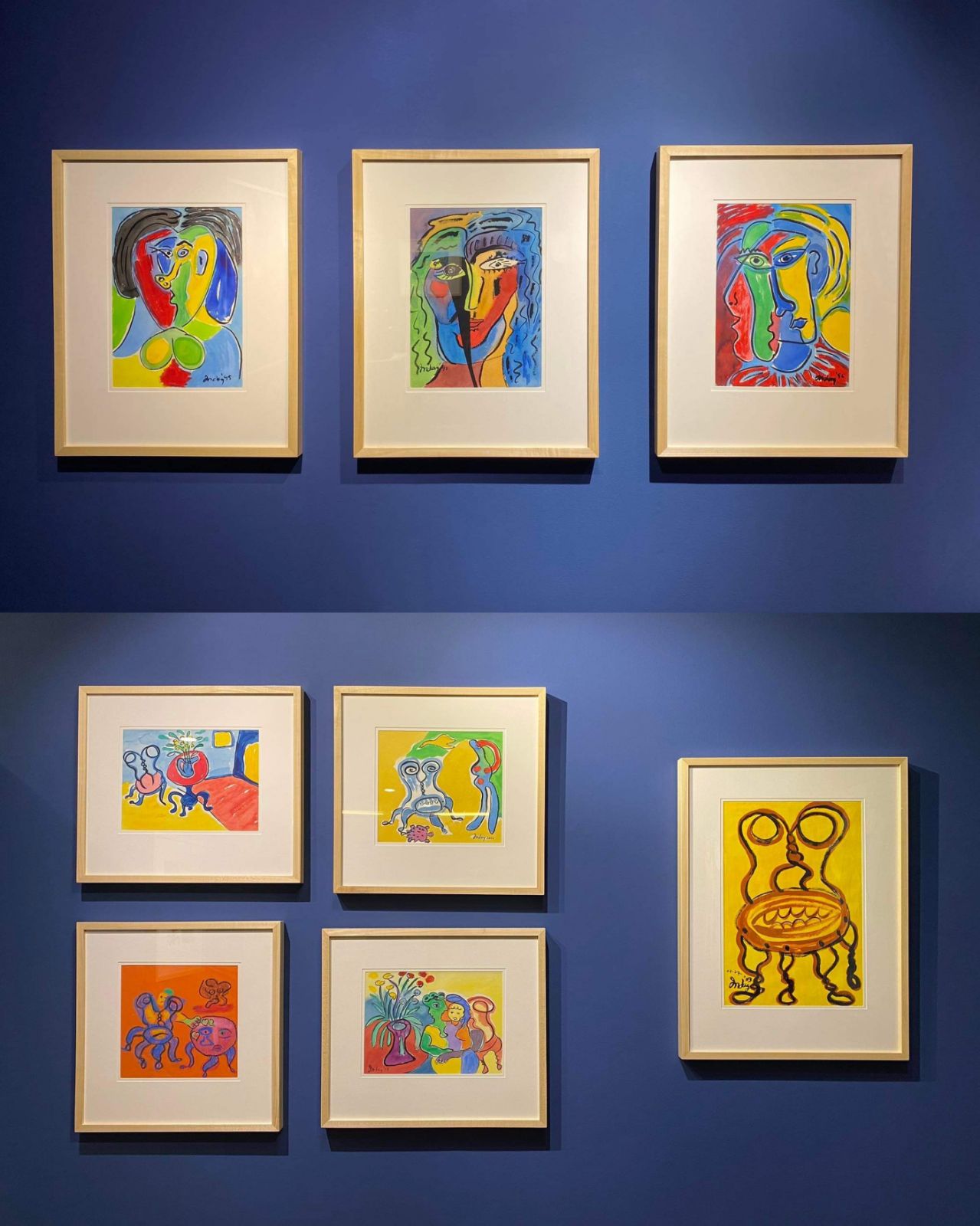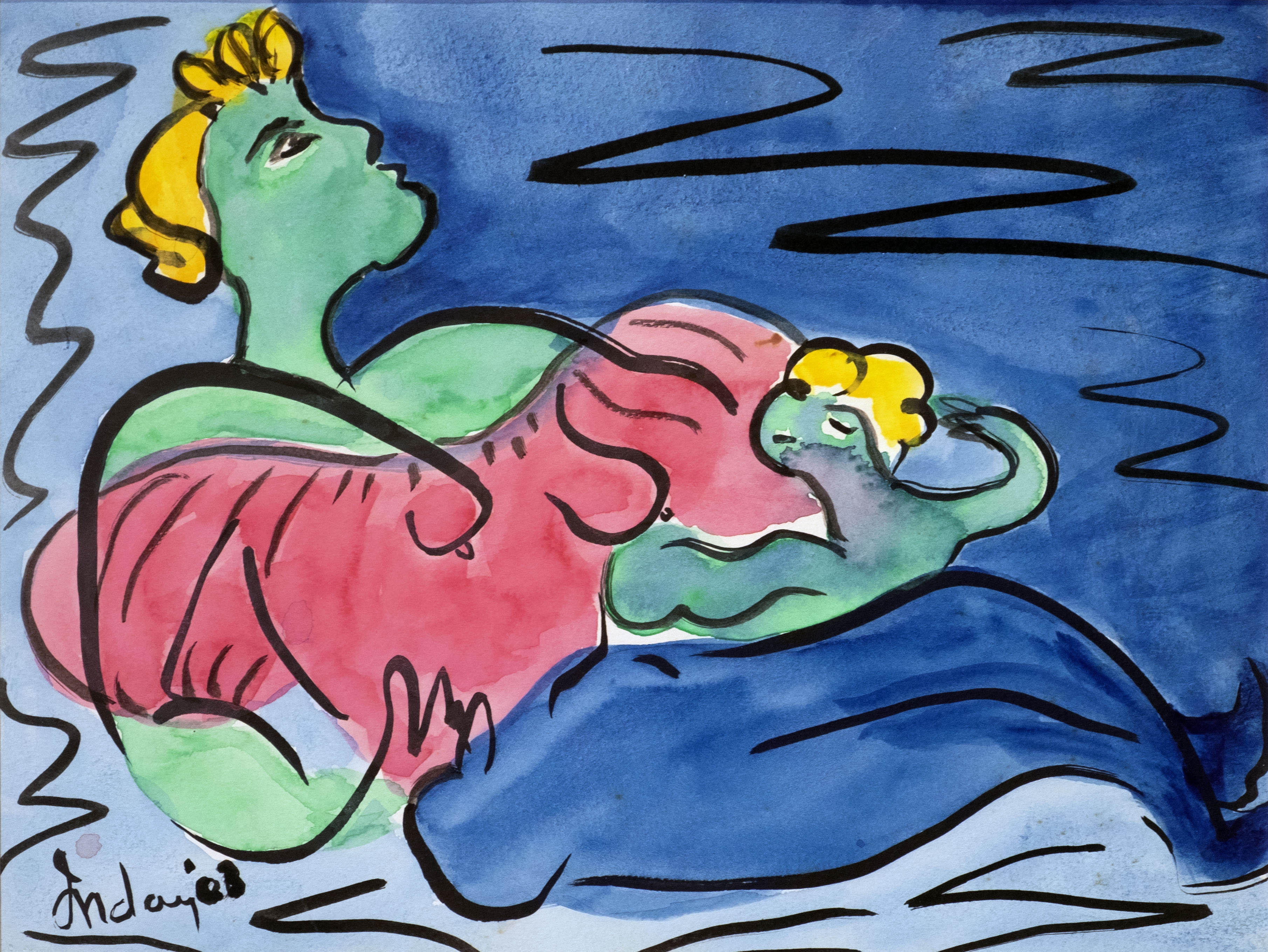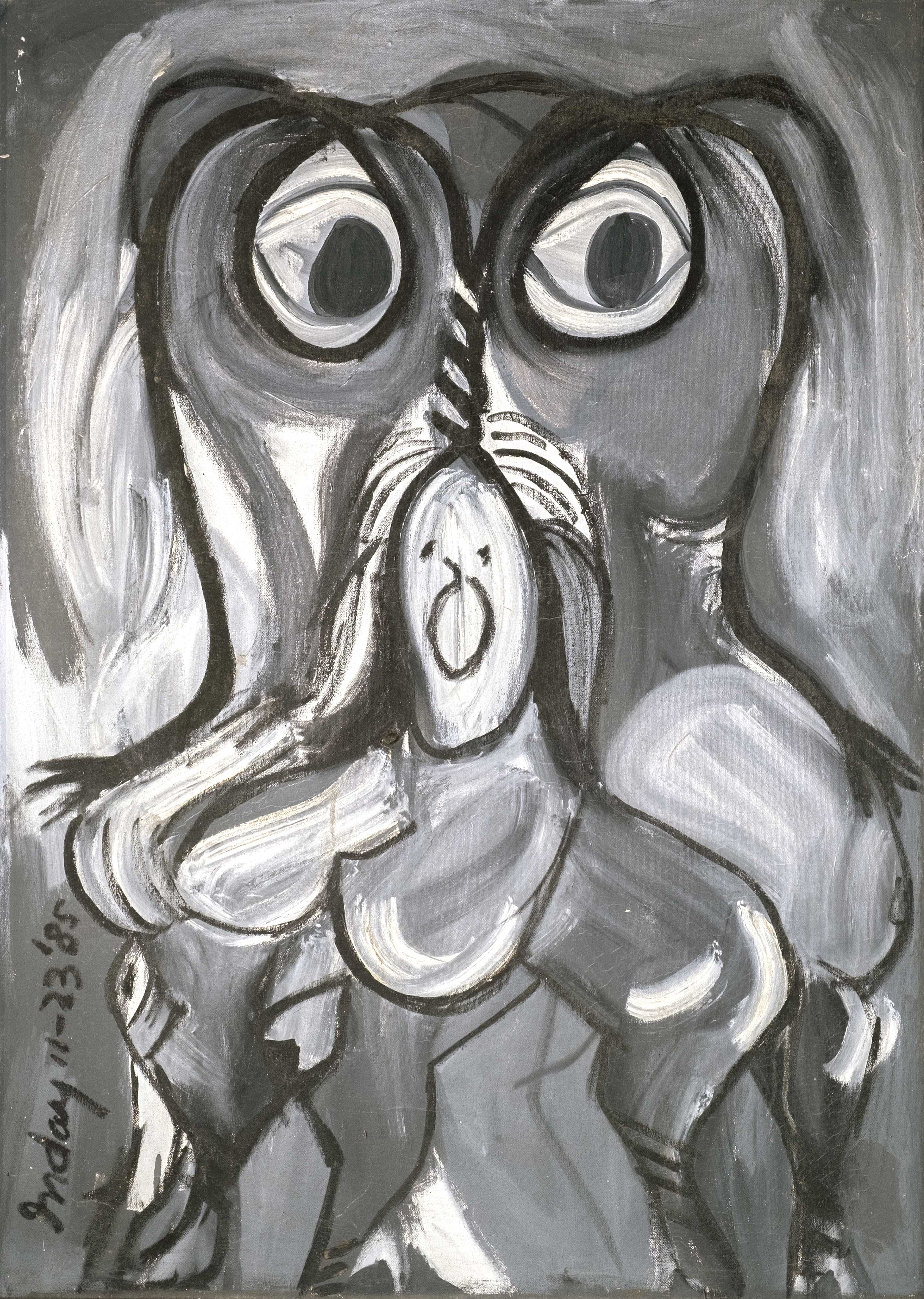Looking upon the Expression series of Inday Cadapan, one gets the sense of an artist with a mindset as playful as it is daring. Her keen eye for genre – for capturing its essence and breaking it altogether – speaks of a painter with a deep appreciation and understanding of the environments she was presented. It’s common to conceive of the manifold identity of a woman as her “faces,” shifting the attention from physical appearance to the many things she has been and will continue to be. In the case of Inday’s bountiful life, her faces were as radiant and evocative as her illustrious body of work.
Memorializing such a prolific woman, Fundacion Sansó presents the retrospective exhibit The Many Faces of Inday Cadapan. Formed almost 20 years after her passing, the show pays tribute to an artist who dedicated her life to her craft, family, activism, and a simple yet wholehearted love for creative expression. On display are artworks from the mid-1980s to the early 2000s, ranging from watercolor pieces on paper to wooden sculptures. Inday’s visual sensibilities bring together the formal deconstruction of Cubism with a dynamic grasp of color that feels distinctly Filipino. Color is beauty, she believed. Despite the personal turbulence she experienced throughout her life, she continued to tap into this beauty and echo it out into the world.
Elsie Reyes-Cadapan was born in 1939 in Negros Oriental. She took on the moniker “Inday” as a gesture of affection for her Visayan roots. Demeaning modern stereotypes view inday as the lowly househelp. Inday’s proud use of the name served not just to uplift the image of the Visayan maid, but of women in general. This love and care would guide many of the paths she would go on to pursue. Even with a childhood plagued with sickness from rheumatic heart disease, she maintained a zealous love for reading, the arts, and the sciences. Her love for storytelling stemmed from her relations with a distant relative: famed writer Severino Reyes. After managing a vegetable store at one point, (a responsibility she later entrustedwhich she then passed on to her assistants) she turned to antique dealing, which brought her even closer to the arts. Her enthusiastic search for artistic treasures led her to the works of Picasso and Matisse, whose expressive styles would inspire her to nurture her own – one viewed through a uniquely Philippine lens.
The retrospective is awash in color and a lively handle on lines. Yet as curator Ricky Francisco points out, “… it often needs an astute awareness to see past the gleeful compositions and see class structure and the insidious injustice that often comes to play in what has already been normalized.” One of Inday’s most prominent “faces,” indeed one she ingrained deeply as she cultivated her artistic voice, was as a defender of the marginalized. Following the end to Martial Law, she devoted several works to the theme of people power.
Her Batibot series from the mid ‘80s strongly resonate Picasso’s Guernica in color, form, and a visual urge to depict the familiar in more ways than one. Engaging with such traditional motifs like the Mother and Child in a manner removed from classical conventions prompts one to look beneath sunny exteriors. Within the bedrock of these visuals is an ardent sense of emotion seen in the uplifting of the Filipino woman, in the conflicting forms shaped by a context of upheaval, and a subverting of genre mannerisms seldom seen in female painters at the time.
Magel Vee, Inday’s only child, shared how her mother would often face criticisms early in her career. The simplicity in her form and her lack of a formal artistic background had many questioning her skills. But Inday took these all in stride, relishing in an art practice free of pretense or commercial aspirations. She extended this enthusiasm to the artistic community as a whole, opening the doors of her Antipolo studio to fellow artists for hearty conversations and exchanges. In the simplicity of her works, one sees an earnestness and a passion unhindered by any pressures to be a specific kind of artist.
There’s a tendency to condense the lives of female artists into just their faces – woman, businesswoman, self-taught artist, mother – as if their identities could be so instantly reduced to labels. These facets transcended mere labels in the life of Inday Cadapan and made her into an often overlooked but nonetheless fervent proponent of the Philippine social realist movement. There are many artists today working in the same artistic veins, but few can capture the same spirit Alice Guillermo described as that of “a female warrior who expresses her love for country and people in art,” using such an authentic and untainted creative voice. Inday passed after a months-long battle with liver cirrhosis, yet through the pain, she still found healing in art. The legacy she leaves behind is one often lost in contemporary contexts: that art brings integrity, beauty, and in its purest form, joy, to even the darkest of times.
The Many Faces of Inday Cadapan runs from October 15 to November 12, 2022, at Fundacion Sansó while select pieces are available on the Cartellino shop from October 17 to November 5, 2022.
Mara Fabella is an artist, writer, and occasional fitness junkie. Tap the button below if you'd like to buy her a coffee.
Images courtesy of Fundacion Sansó.






